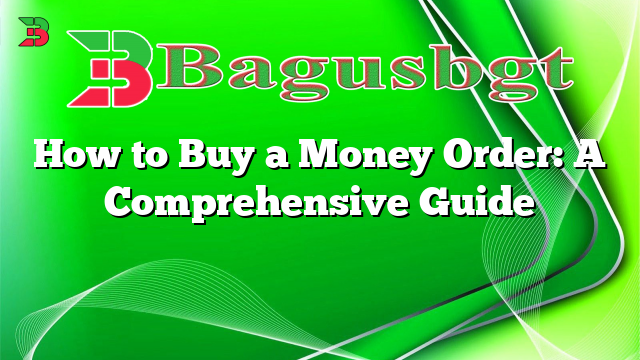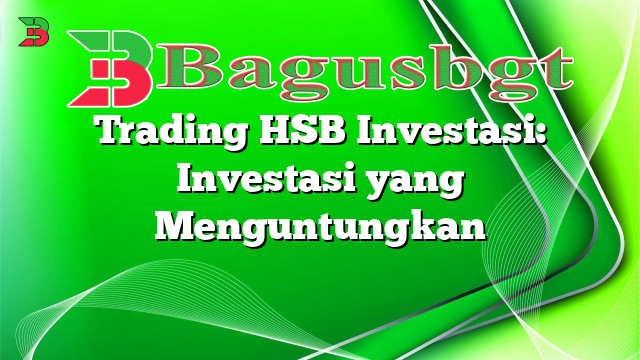Salam, dear readers. In this article, we will provide you with a step-by-step guide on how to buy a money order. Whether you need to make a payment or send money securely, a money order can be a convenient option. Let’s dive into the details!
Subtitles:
1. Understand the Basics
Before purchasing a money order, it is crucial to understand what it is and how it works. A money order is a prepaid payment method that guarantees the recipient will receive the specified amount. It is a secure alternative to cash or personal checks, making it an ideal choice for various transactions.
Money orders are typically issued by banks, credit unions, post offices, and some convenience stores or retail outlets. They are available in different amounts, ranging from a few dollars to a few thousand dollars.
2. Research Available Providers
Once you are familiar with the concept of a money order, the next step is to research the available providers. Look for reputable institutions that offer money order services. Banks and post offices are usually reliable options, but it is essential to compare fees, limits, and additional services offered by different providers.
Consider factors such as convenience, accessibility, and reputation when choosing a provider. You may also want to check if the recipient has any preferences or restrictions regarding the money order provider.
3. Visit the Provider
After selecting a provider, visit their nearest branch or location. Be prepared with the necessary documentation and funds to complete the transaction smoothly. The required documents usually include a valid identification document such as a driver’s license or passport.
4. Fill Out the Money Order
Once you arrive at the provider’s location, request a money order form. Carefully fill out the required information, including your name as the payer, the recipient’s name, and the amount you wish to send. Double-check the details to ensure accuracy.
It is crucial to write legibly and avoid any alterations or corrections on the form, as it may invalidate the money order. Take your time to complete the form accurately to prevent any potential issues.
5. Pay the Fees
Money orders come with a fee, which varies depending on the provider and the amount of money order. In addition to the primary fee, some providers may charge additional fees for expedited services or international transactions.
Be prepared to pay the required fees in cash or through another accepted payment method. Ensure you understand the fee structure and ask any questions before making the payment.
6. Obtain Your Receipt
After paying the fees, the provider will issue you a receipt. Keep this receipt safe, as it serves as proof of purchase and includes essential details such as the money order number. In case of any issues or inquiries, having the receipt will facilitate the process of resolving them.
7. Deliver the Money Order
Once you have the money order and receipt in hand, you can deliver it to the intended recipient. Some providers allow you to send the money order directly to the recipient’s address, while others require the recipient to visit their branch or location to collect it.
Ensure that the recipient is aware of the money order’s arrival and knows how to claim it. Provide them with any necessary information or instructions required by the provider.
8. Track Your Money Order
If you want to track the progress of your money order, some providers offer online tracking services. By entering the money order number and other relevant details, you can stay updated on its status and ensure a smooth delivery process.
9. Pros and Cons of Money Orders
| Advantages | Disadvantages |
|---|---|
| Secure payment method | May incur fees |
| Accepted by various institutions | Not suitable for large amounts |
| No need for a bank account | Not traceable if lost or stolen |
Money orders offer a secure way to send money without requiring a bank account. They are widely accepted and can be an excellent option for small to medium-sized transactions. However, they may not be suitable for larger amounts, and fees can accumulate if frequent transactions are made. Additionally, if a money order is lost or stolen, it may not be traceable or recoverable.
10. Alternative Methods
If a money order does not meet your requirements, several alternative methods are available for sending money. Electronic funds transfer (EFT), online payment platforms, and wire transfers are popular alternatives to consider. Each method comes with its advantages and disadvantages, so it is essential to research and choose the option that suits your needs best.
Conclusion
In conclusion, buying a money order can be a straightforward process if you follow the necessary steps. Understand the basics, research available providers, and visit the chosen provider to fill out the money order form and pay the required fees. Keep the receipt safe, deliver the money order to the recipient, and track its progress if desired. Consider the advantages and disadvantages of money orders, and explore alternative methods if needed. By following this comprehensive guide, you can make secure and convenient money transfers using money orders.
Frequently Asked Questions (FAQ)
Q: Can anyone purchase a money order?
A: Yes, anyone can purchase a money order as long as they meet the provider’s requirements such as providing valid identification and the necessary funds.
Q: Are money orders refundable?
A: Money orders are generally refundable if they are lost, stolen, or unused. However, the process and requirements for refunds may vary between providers. It is recommended to contact the provider directly for specific refund policies.
Q: Can I use a money order for international transactions?
A: Yes, money orders can be used for international transactions. However, it is essential to check with the provider regarding any additional fees, currency exchange rates, and specific requirements for international money orders.
Q: How long does it take for a money order to reach the recipient?
A: The time it takes for a money order to reach the recipient depends on various factors, including the provider’s policies and the mailing distance. Some providers offer expedited services for faster delivery, while regular mail may take several days or more.
 Bagus Banget Collection of the latest information from various reliable sources
Bagus Banget Collection of the latest information from various reliable sources




